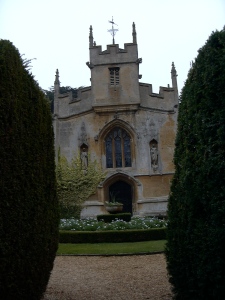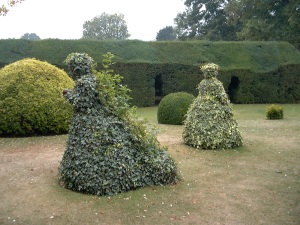King Henry VIII died in January of 1547, leaving his 6th wife, Katherine Parr, a generous settlement. Within a few months of Henry’s death, Katherine secretly married Thomas Seymour. There was a bit of a scandal because of the unseemly haste and secrecy of the wedding, but they rode it out. Thomas was the brother of Henry’s 3rd wife, Jane Seymour. She had married Henry after Anne Boleyn’s execution. She died after giving birth to Henry’s long-awaited male heir, Edward. Many people believed that Katherine had planned to marry Thomas Seymour all along, and had only married Henry out of a sense of duty to her monarch. (I have to wonder whether anyone ever got away with saying “no” to Henry about anything, including marriage).
Henry had entrusted Katherine with the care and education of Elizabeth, the orphaned daughter of Henry and the unfortunate Ann Boleyn. Thomas Seymour, who had high political ambitions, became the guardian of young Lady Jane Grey, who was a minor and cousin of the late Henry. (Later, Thomas was part of a plot to place the innocent pawn Jane Grey on the throne. The doomed plot cost Lady Jane her head at age 17). For awhile, though, the couple and their young charges lived in apparent harmony at Sudeley Castle. I can imagine the two young women and their older guardian studying together in the sunny rooms and peaceful Queen’s Garden.
The harmony did not last long. Soon rumors flew that Thomas Seymour was overly interested in the young Elizabeth, and she in him. She was packed off to live elsewhere.
Katherine died a few days after giving birth to her first and only child in 1548. Thomas Seymour was off to bigger and better things. He abandoned the infant daughter, who was taken in by a friend of Katherine’s and essentially never heard from again. Katherine was buried in St. Mary’s Chapel at Sudeley, mourned mainly by young Lady Jane Grey. But a hundred years later, during the Civil War, the chapel was ruined and her body was lost. A farmer found her coffin in 1782. He opened it, found her body well-preserved, took a lock of hair, and reburied her. The coffin was dug up again and reburied several more times, once upside-down by drunken hooligans. Finally, in 1817, her body was moved back to Sudeley, the chapel was rebuilt, and eventually a magnificent tomb was built as a final resting place for Katherine.
A ghost adds immeasurably to the elegance of any castle, especially a royal ghost. Sudeley’s is believed to be Katherine Parr. Tour guides report that a lady dressed in green has appeared to numerous people. I doubt I will ever see the ghost, but I have seen a Green Lady–or, rather, two of them. On the pathway from the castle to the chapel stand topiary figures of Katherine and her dear companion, the young Lady Jane Grey. Tour guides explain that the two women attended chapel every day during the short time they had together.
Royal or not, women in the Tudor and Elizabethan era lived in perilous times. Between political machinations controlled by men, and the dangers of childbirth controlled by no one, they often lived short and tragic lives. I’m looking forward to a new historical fiction account of Katherine Parr’s life, Queen’s Gambit, by Elizabeth Fremantle. I’m sure it will relate the stories of Lady Jane Grey and the young Elizabeth to Katherine Parr’s life. A Wall Street Journal article about the writer’s process of telling this remarkable woman’s story is at http://online.wsj.com/article/SB10001424127887323610704578627820370655036.html.
Join me next time for more on the art, history and literature of Europe and the British Isles!





